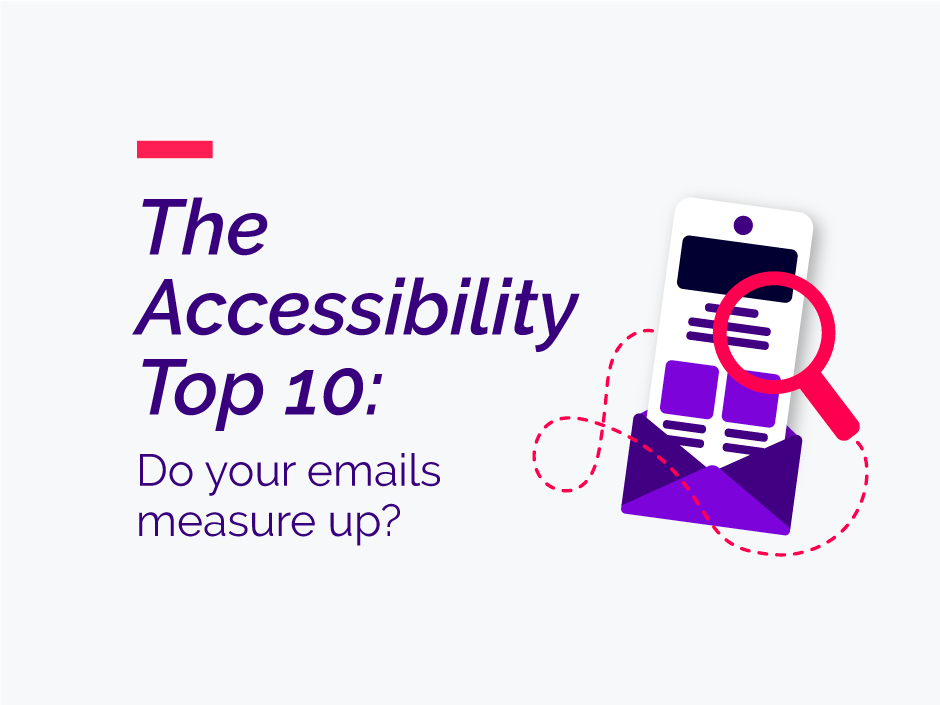5 signs you should recode your emails
- Conversion Digital
- Sep 16, 2021
- 4 min read
Updated: Nov 16, 2021
It’s a common enough occurrence in email marketing. Your team is heads-down planning and executing campaign after campaign – likely under tight timelines and perhaps with last-minute content changes or additions. They may be reusing templates and copying content over from previous emails. After all, it’s efficient to use previously tested emails as a starting point for new ones. Or is it?
It can be a timesaver – at first. But if you recycle the same code for too long, it can be easy to lose sight of the code quality, especially as it’s invisible to all but developers. Your code is like the wiring in your house – if the lights stay on, everything seems fine. But plug in too many hairdryers, and it’s only a matter of time before the system shorts.
Here are 5 signs it’s time to conduct a code review:

ONE
Slow email load speed
We’ve all experienced that lag when opening an email: content seems to take its sweet time filling in, and if it’s not a critical email, we give up. The experts at Litmus analyzed more than 4 million email opens and found that 51% of readers deleted emails within 2 seconds of opening. Microseconds matter. Slow loading can be caused by factors out of your control, like poor internet connections, slow or app-burdened devices, and so on. But it can also be caused by the email itself. Each time you leverage old code for a new email, you’re likely to add bits of code and unlikely to delete the code that isn’t needed for the new content. Over time, the code can get cluttered and slow your email down. Experienced developers can streamline code by cleaning it of unnecessary characters or comments, and by keeping the HTML file size below the industry recommendation of 125kb. (At Conversion, we try to keep it to 100kb.)
TWO
Heavy, image-based design
This too is about HTML file size. The more images you have, the “heavier” the email, and the longer it takes servers to load those images. The overuse of images is problematic for other reasons too:
Some users might have the images disabled on their end, so your content won’t be seen.
Deliverability could be affected. Since spam emails are often built as one image block, an image-laden email could be blocked by some ESPs.
Images compromise accessibility. Yes, you can use alt text for those using screen readers, but an over-reliance on them can create a disjointed experience – and it’s just more code that contributes to an email’s “weight.”
Most brands want to use their brand font in emails – but usually this means using images of text so that the font renders properly. Find a digital-friendly font and use your “official” brand font sparingly – perhaps only for a masthead or hero image (with alt text).
THREE
Poor rendering in mobile
One of the most obvious signs that your email templates need a revamp is inadequate rendering on phones and tablets. We all experience this regularly – the email with minuscule, unreadable type, or the CTA buttons or links that are too small for your fingers to precisely tap. As a best practice, email should be structured to be displayed in one column (rather than 2 or more), and the body font size set to at least the standard 14px. And if you have to embed text in images, the text should be large enough to be readable on a phone. According to Statista there are over 4 billion mobile users in the world and almost the same number of active email users. Moreover, more than half of users worldwide access their inbox on their phone. Optimizing for mobile should now be table stakes.
FOUR
Email layout is breaking in major clients
Your email templates may have been designed and coded for earlier generations of email clients such as Outlook (which is the most difficult to code for). As clients proliferate and evolve, your code needs to be checked and updated accordingly.
FIVE
Non-compliance with accessibility guidelines
The Accessibility for Ontarians with Disabilities Act (AODA) requires that digital content be designed and coded to allow people with visual and other impairments to access all important information. Email code should be audited and updated to meet accessibility best practices, which go beyond the way images are treated. Watch for our upcoming blog on the top 10 factors for email accessibility.
If any of these 5 signs apply to the emails you’re sending to customers, a close look at your code, and/or your email design, may be in order. Ask your developers for their POV. They may very well have noticed issues but have been too busy – or haven’t felt they had permission – to recommend a code review. Or, if you’d like an independent, expert assessment of your email templates, our designers and developers are deeply knowledgeable and would be delighted to help. Let’s unplug a few hairdryers.
Vic Dinovici is a Senior Email Developer with a passion for clean code. His sock drawer is also impeccably organized.





Comments